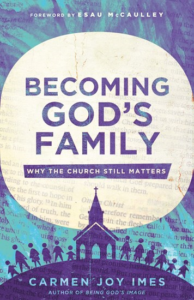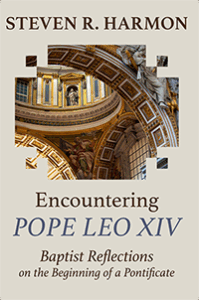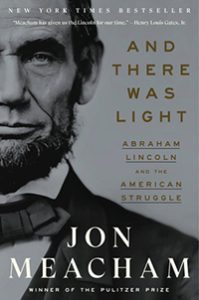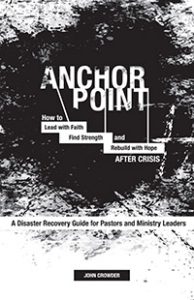Review: Light in the Shadow of the Valley of Death: Stories of Ukrainian Christians During the War
Light in the Valley of the Shadow of Death: Stories of Ukrainian Christians During the War
Edited by Roman Soloviy (Langham Global Library)
Twelve Ukrainian Christians hold onto light amid a profoundly dark time. The news is not full of updates from the front like it was in the first months of the war between Russia and Ukraine. Even if it was, it wouldn’t carry the light these 12 writers bear in their contributions to a much-needed perspective on what it means to be a Christian during war.
The 12 writers of Light in the Valley of the Shadow of Death: Stories of Ukrainian Christians During the War include a  seminary rector, a pregnant mother, theologians, military chaplains, a widow and a pastor.
seminary rector, a pregnant mother, theologians, military chaplains, a widow and a pastor.
Their stories begin before Russia’s full-scale invasion on Feb. 24, 2022, and carry through the following days, weeks, months and now years. They are harrowing, raw, heavy and vulnerable. They do not shy away from expressing anger, fear, guilt or shame.
Some fled Ukraine. Some stayed. Some joined the Ukrainian military. For most or all, comfort and security were stripped away, leaving concern only for bare necessities and for family.
Theirs are not thoughts after the conclusion of hostilities or during days of official peace. Nor are they calls from the sidelines or Monday morning quarterbacking. These are reflections from within the crucible.
These 12 testimonies are active, ongoing, in-the-moment questions and experiences without knowing the outcomes. They are written and lived amid hope, not amid hope realized.
The writers do not soft-pedal their questions of God or their pain. In so doing, they challenge comfortable and safe Christianity. They also reveal how strikingly the Ukrainian people continue to do theology, philosophy, biblical study and reflection, ministry and art—even amid war, sharpened and focused by the war.
Some, like Kseniia Trofymchuk, discovered what it means to be a refugee. This experience taught Kseniia: “A person is always more than a checklist of needs” (p. 90). Refugees do have needs, but they are people who are more than their needs.
Pavlo Horbunov, crediting deception as the starting place of war, points out: “There is no sense in saying that everyone has their own truth. No! Everyone may have their own interests, but there is only one truth” (p. 102). War can focus the mind.
Denis Gorenkov’s contribution is a literary jewel that should be read and read again—a parable structured on the Genesis 1 creation narrative.
Tucked within the stories are lessons all can learn from, such as the three things that helped Yevhen Yazvinskyy overcome fear as he served on the front line.
I don’t know how these 12 individuals had the capacity amid their circumstances to write such profound testimonies. Since they did, we owe it to them to read, to reflect on and to grow from their stories.
Eric Black, executive director/publisher/editor
Baptist Standard
 she encourages lament, repentance and the desire not to break fellowship with others among local, global and intergenerational Christians.
she encourages lament, repentance and the desire not to break fellowship with others among local, global and intergenerational Christians. In It Became to Me a Joy, national Woman’s Missionary Union President Connie Dixon highlights times “when God shines brightly through the broken places” in her life, in those of others and in Scripture.
In It Became to Me a Joy, national Woman’s Missionary Union President Connie Dixon highlights times “when God shines brightly through the broken places” in her life, in those of others and in Scripture. Harmon, who has represented the Baptist World Alliance in dialogue with both the Catholic Church and the Anglican Communion, journeyed to Rome to report and reflect on the election of a successor to Pope Francis.
Harmon, who has represented the Baptist World Alliance in dialogue with both the Catholic Church and the Anglican Communion, journeyed to Rome to report and reflect on the election of a successor to Pope Francis. As the subtitle suggests, each poem invites the reader to take in a character’s perspective deliberately and contemplatively.
As the subtitle suggests, each poem invites the reader to take in a character’s perspective deliberately and contemplatively. Pulitzer Prize-winning historian and presidential biographer Jon Meacham provides a much-needed corrective both to Christian nationalists who paint all respected American figures of the past as sterling evangelical believers and to secularists who deny any Christian influence on American history.
Pulitzer Prize-winning historian and presidential biographer Jon Meacham provides a much-needed corrective both to Christian nationalists who paint all respected American figures of the past as sterling evangelical believers and to secularists who deny any Christian influence on American history. Serving God Under Siege tells the story of their evacuation, relocation and months of learning to live in a new place where everything seemed different—the food, the culture, the customs—even among fellow Christians. Eerdmans has scheduled Serving God Under Siege for release Oct. 9.
Serving God Under Siege tells the story of their evacuation, relocation and months of learning to live in a new place where everything seemed different—the food, the culture, the customs—even among fellow Christians. Eerdmans has scheduled Serving God Under Siege for release Oct. 9. Author Michael W. Goheen believes followers of Jesus are called to live out the gospel for the world’s sake. However, they need a spiritual formation and discipleship process to equip them for that task.
Author Michael W. Goheen believes followers of Jesus are called to live out the gospel for the world’s sake. However, they need a spiritual formation and discipleship process to equip them for that task. In Book 3, Dangerous Dilemmas, David, Solomon and Daniel pull 11-year-old Patrick from Psalms to Malachi. Liz and Jack Hagler combine Jack’s imaginative melding of fiction and fact with Liz’s engaging black-and-white illustrations to create a hilarious and poignant graphic novel in the form of Patrick’s illustrated journal describing his adventures as a kid and a time traveler.
In Book 3, Dangerous Dilemmas, David, Solomon and Daniel pull 11-year-old Patrick from Psalms to Malachi. Liz and Jack Hagler combine Jack’s imaginative melding of fiction and fact with Liz’s engaging black-and-white illustrations to create a hilarious and poignant graphic novel in the form of Patrick’s illustrated journal describing his adventures as a kid and a time traveler. Samson’s prayer for the Lord to “remember me” is highlighted with the author’s commentary on Samson’s legacy, his appearance in the hall of faith, and the struggles of everyday life.
Samson’s prayer for the Lord to “remember me” is highlighted with the author’s commentary on Samson’s legacy, his appearance in the hall of faith, and the struggles of everyday life. She begins by distinguishing calling and vocation from work and passion. Work has inherent value, in addition to providing income and—perhaps—a sense of fulfillment, but calling has a higher purpose. Passion can provide the fuel to help us achieve some great purpose, but many individuals labor in jobs totally unrelated to their passions. They may be called to something far greater than what could be a fleeting passion.
She begins by distinguishing calling and vocation from work and passion. Work has inherent value, in addition to providing income and—perhaps—a sense of fulfillment, but calling has a higher purpose. Passion can provide the fuel to help us achieve some great purpose, but many individuals labor in jobs totally unrelated to their passions. They may be called to something far greater than what could be a fleeting passion. Church conflict is interpersonal conflict. As long as ministry involves people, Shelley’s book is indispensable for the inevitable church conflict and helped me more than any other book.
Church conflict is interpersonal conflict. As long as ministry involves people, Shelley’s book is indispensable for the inevitable church conflict and helped me more than any other book.